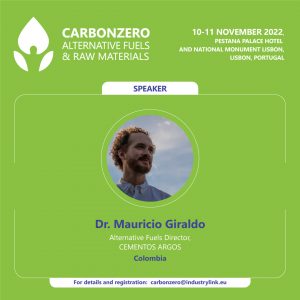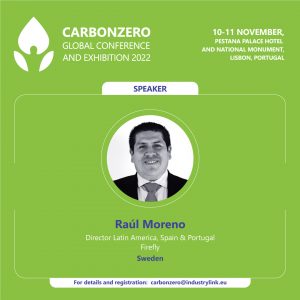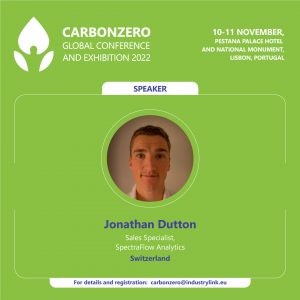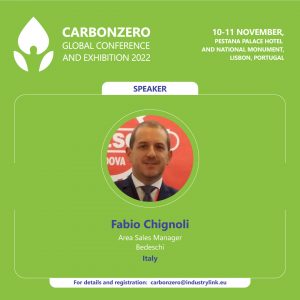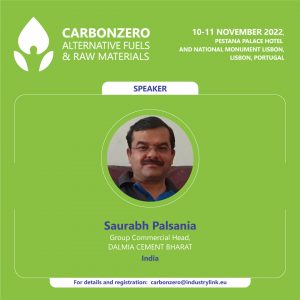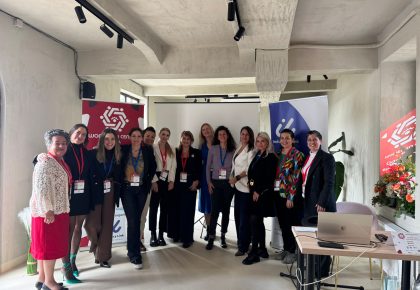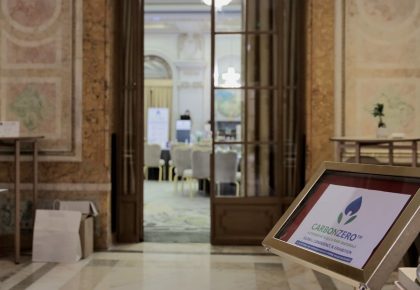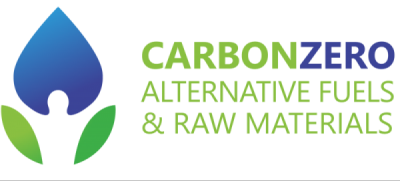

Dr.Yianni (Ioannis) SpanosDirector of Sustainability, Keo International Consultants
Bio: Dr. Spanos is a consultant, professional engineer, and sustainability expert with 20 years of experience. Following a Bachelor’s Degree with Honors in Mechanical Engineering, he has completed an MSc in European Construction, an MSc in Building Services Engineering, a Ph.D. in Physics of energy within the built environment, and a Global Executive MBA by INSEAD. As a Director of Sustainability of KEO International Consultants, he provides professional consultancy and strategy-related services to government institutions, investment funds, developers, architects, and contractors. His experience includes the development of sustainable real-estate assets, renewable energy, and urban development programs in the Middle East & North Africa, the UK, Europe, and West Africa. His primary interest is in the implementation of added commercial value through client-focused sustainability, ESG, and Climate Change related decisions in the early stages of development. He is currently delivering organization and city-scale-wide strategies to some of the signature clients. Dr. Spanos’ projects have received various Middle East awards. He is actively supporting academic research, Gulf regional Green Building Councils, and international professional bodies. Title: “Net-zero emissions and a carbon-neutral global economy – wishful thinking or global priority?” Abstract: Decarbonization is needed to provide a sustainable future for all of us and it is a global priority based on the data that is available from the scientific community. Considering the climate change data in parallel to the global population growth and the growth of the regional economies, decarbonization should be seen as an opportunity for new businesses rather Existing and new cities are driving our economies and net-zero will have an impact on how the cities will be developed. Cities, in general, are going through regeneration cycles that require investments in how the cities our structured and how the cities are re-constructed. Alternative fuels and the construction-associated emissions for materials, inclusive of concrete will play a big role in future decisions. The carbon zero is used as a term and this is broken down into different aspects of our ways of living. We have produced studies, of which some data will be presented that show that indeed fuels and materials, especially cement, are critical regarding their carbon contribution to future targets.
|
Mauricio GiraldoAlternative Fuels Director, Cementos Argos Colombia
Bio: Mauricio Giraldo is a Mechanical Engineer with a Ph.D. in Engineering and 15+ years of professional experience in the areas of innovation, alternative energies, alternative fuels, and raw materials, business model construction, and process optimization, half of which have been within the cement sector. During this time, he has led the development of several solutions in the field of sustainability including a specialized wind turbine for low wind velocity, urban rail energy optimization devices, and in later years, the establishment of a sustainable and growing supply chain for alternative fuels for Colombia, where the market had not yet been fully developed and had been stagnant for more than a decade. Title: “Road to net zero: Achieving quantity and quality of alternative fuels in developing economies.” Abstract: Climate change is no longer about our tomorrow, it is about our livelihood today, and it is impacting every country in the world in one way or the other. We need action now, and although we are seeing some of it lately, we need to accelerate our efforts and adapt them to local conditions. It is an honor to be able to present what Cementos Argos has been doing to reduce its carbon footprint with alternative fuels and raw materials. But most importantly, on how this can be done, and hopefully replicated and rapidly deployed, especially on developing countries which are currently struggling the most because of the effects of climate change on one hand, but also for the difficulty in developing working zero carbon strategies.
|
Matthias MersmannCTO, KHD Germany
Bio: Educated as a mechanical and process engineer from Technical University Aachen (Germany), Mr. Mersmann has gathered experience of 30 years in the cement industry. He started his work at KHD Humboldt Wedag as a process engineer, worked at all levels, and led all technical departments throughout his tenure. In 2008 he founded the company Aixergee, which is specialized to provide CFD-based consultancy for the cement industry. He also worked as Technical Director for Loesche GmbH, Germany for 8 years before he was called into the Management Board of KHD Humboldt Wedag AG in 2020. Title: “Decarbonizing Cement: Alternative Fuels and Raw Materials” Abstract: The manufacturing process for clinker and cement has been implemented almost identically in almost all cement factories throughout the last decades. Now facing the challenge of decarbonization, the industry technologists see a multitude of ways to change, modify and adapt this manufacturing process by using different raw materials, intermediate products and new technologies. In fact, the manufacturing process and the raw material system allows to phase in and phase out CO2 in various ways along the process chain. This opens the opportunity to utilize different fuels and feedstock material for the production of cement and clinker. This paper will outline some general options to use different alternative fuels and raw materials and describe the necessary process and equipment adaptations.
understanding. |
Raul MorenoDirector Latin America, Spain & Portugal, Firefly AB
Bio: Raúl Moreno graduated from the National Polytechnic Institute of Mexico with a degree in Aeronautical Engineering and years later obtained an MBA from Thunderbird School of Global Management. Title: “Fire prevention solutions in the production, handling, and storage of Alternative Fuels” Abstract: Unfortunately, fires are very common in the alternative fuels’ world, whether it is during their production, when they are being handle of while in storage. It is even more complicated to timely identify the origin of these fires, additionally with newer technologies, newer dangers arise such as lithium batteries. During this presentation we will present our latest developments in technology to identify and prevent fires sometimes even before they start.
|
Jonathan DuttonSales Specialist, SpectraFlow Analytics, Switzerland
Bio: An environmental geochemist by study, Jonathan is passionate about impacting positive, large scale environmental change in the world. He began his career with three years In South African mining; working as a geologist in Iron Ore exploration, Platinum ore control and then sensor evaluation and technology development, all for Anglo American. Thereafter, he joined SpectraFlow Analytics to pursue the incumbent change from bulk ore control to precision advanced process control in the minerals industry. Jonathan believes that one significant way of achieving this is through the use of safe, low energy sensing technologies like online NIR spectrometry. As of 2022, he works as a consultant Sales Specialist for SpectraFlow Analytics out of Johannesburg, South Africa. Title: “Industry 4.0 for a better, greener tomorrow – Sensing solutions for measuring different fuel types” Abstract: The recent geopolitical situation has highlighted the misplaced reliance on fossil fuels, but also the fragility of our renewable energy supply. How do we maintain a reliable source of energy to our infrastructure, whilst reducing coal, oil and gas fueled power in favor of low carbon fuels? The solution is to turn all kind of waste into fuel. By using a large variation of these alternative fuels the requirement of monitoring the fuel composition gets more important. SpectraFlow Analytics offers a hardware and software sensing solutions for accurately measuring different fuel types. Realtime online Near Infrared (NIR) analysis not only provides the opportunity to minimize volumes of organic fuels by increasing the amount of alternative fuels but maintain also a high performance of the kilns. SpectraFlow offers a Crossbelt and an Airslide solution for analysis in crucial positions in the cement process, as well as Raw Mix Proportioning software for precise control of weight feeders for raw material and additives. The intuitive feedback loops and detailed, reliable feed forward information provided will prove to be essential in the drive towards advanced process control to bring cement production firmly into Industry 4.0 for a better, greener tomorrow.
|
Fabio ChignoliSales Manager, Bedeschi, Italy
Bio: M.Sc. Eng. Fabio Chignoli is working at Bedeschi as Sales Manager covering South America, Spain and Portugal and as Key Account for the cement industry. He is a Graduate in Aerospace Engineering at the Polytechnic of Milan and he has more than 15 years of experience in cement industry with expertise in material handling and air pollution control. Title: “Carbons Zero: new challenges in handling material” Abstract: Cement manufacturers are looking for solution to reduce CO2 footprint of their production, implementing use of raw materials alternative to clinker like calcined clay and increasing the use of alternative fuels like RDF. While developing this new technology they are facing new challenges derived to the need of store, reclaim and conveying in an ecofriendly and clean way such new materials. RDF and alternative fuels require dedicated transport system inside cement plant and the use of pipe conveyors is nowadays the state of the art. Pipe conveyors avoid spillages and dust emission, furthermore this is a solution that easily fit to existing plant resulting in less transfer point and chute with an overall reduction for the energy spent to control dust and particulate emissions. Use of Calcined Clay as substitute for clinker require new storage and handling system for clay to be implemented in the cement production. Being clay usually wet and sticky, it requires special care in storage, reclaim and handling and when homogenization of humid and sticky clay is required to optimize calcination process vertical wall blending storages remain the most effective solution available.
|
Dr. Ian SkocekR&D Program Manager Carbonation Technologies, Global R&D, HeidelbergMaterials
Bio: Since 2012, Dr. Skocek has been working at HeidelbergMaterials Global R&D, currently as the R&D Program Manager Carbonation Technologies and as a Senior Scientist before. He has been managing R&D projects on CO2 reduction by concrete recycling, enforced carbonation and CO2 mineralization, which recently got awarded the German Innovation prize for climate and environment. Before joining the industry, Jan followed an academic career in the field of material science related to concrete and cement (2006-2012, DTU, Copenhagen) and of numerical methods and modelling (2003-2006, CTU, Prague). Title: “Circular economy of concrete, cement and CO2” Abstract: Our society in built on concrete, number one man-made material by volume, which has no real alternative. Concrete production is accompanied by a large consumption of virgin materials and the production of hydraulic cements additionally with CO2 emissions. The main part of these emissions comes from the feedstock material – limestone – making these emissions especially hard-to-abate. In this contribution, a novel approach combining advanced concrete recycling with CO2 mineralization and production of a supplementary cementitious material is introduced and discussed, including the recent development status. The advanced concrete recycling can effectively clean and separate aggregates and sand from the hydrated cement paste, enabling their utilization in fresh concrete production without any negative impacts to concrete fresh or hardened properties. The hydrated cement paste can capture CO2 from cement production in a very simple and straightforward process. Upon carbonation, the resulting material is highly pozzolanic and can be used for cement production, further reducing the overall CO2 emissions, turning the approach into an efficient CCU technology. The overall approach enables complete concrete recycling, including the hydrated cement fraction and the process emissions it emitted. Additionally, it is energetically favorable and can be integrated into existing processes, turning it into an important part of industry’s decarbonization effort.
|
Fokion TasoulasExecutive Director, Titan Cement, Greece
Bio: Fokion Tasoulas has worked for Titan Cement Group since 1989 and has held a number of technical, managerial and executive positions. He has been a member of the Group Executive Committee since 2017 and, as of October 2020, he holds the position of Group Innovation and Technology Director, leading Digital Transformation projects with a focus on Assets’ optimization and Reliability improvements with AI and big data analytics. Prior to his current role, he served as Group Engineering and Technology Director for eight years. He has also covered various roles within the Group including, among others, Regional Director for Egypt, Albania and Kosovo, with P&L responsibilities for those countries, and Vice President, Cement and Aggregates Operations in the Florida Business Unit of Titan America. While in Titan America, he was responsible for the cement and aggregates operations at the Pennsuco plant in Medley, Florida, and had technical oversight of the Roanoke cement plant in Roanoke, Virginia. Fokion Tasoulas earned his Master’s degree in Mining and Metallurgy Engineering, from the National Technical University of Athens in Greece. Title: “Boosting cement Decarbonization with Digital Transformation” Abstract: The time for action for more climate protection and decarbonization has now come. No one can escape this development any longer because cement industry is setting itself the goal of becoming climate-neutral by 2050. This is an ambitious goal for which the consistent use of new technologies is essential. The path to a livable, greenhouse gas-neutral future can only be taken and accelerated with digitalization. Digitalization enables new forms of operational excellence, transparency, collaboration, and control, provides the data for better informed production and consumption decisions, integrates the fragmented parts of the building materials ecosystem and opens up new creative possibilities for environmental policy. New technologies must be specifically designed and used in such a way that they provide positive impulses for socio-cultural and ecological changes. Alongside climate change, globalization and demographic change, digitalization is one of the developments that are shaping our world. Digitalization is neither good nor bad for achieving climate targets. It depends on what we make of it – whether we let it roll over us or put it to good use. New information processes can predict real time new performance levels, enhance reliability of the assets, reach new operational excellence levels, promote transparency, for example about the ecological footprint of products. However, this change will only take place to its full extent when the technologies are integrated into society as a matter of course: into organizational procedures, work processes, human behavior, business models, and political action. Decarbonization and digitalization are megatrends that will force sectors and industries to undergo structural change and fundamentally alter traditional business models. Cement industry can gain advantages in digital competition if it will see digitalization as a driver of sustainability. It now has the choice between a restructuring and adjustment of the business model or a potential loss of the basis for the business. New business models are needed that place sustainability at the heart of business activities: it is no longer a question of having an economic strategy that works from a sustainability perspective, but rather a sustainability strategy that works from an economic perspective. The transformation to a lower-carbon business model must therefore become an important cornerstone in the strategy of every company. To implement such a change of direction, in addition to building materials sector strong collaboration between stakeholders, it requires a climate strategy, measurable goals, clearly defined action plans, and reporting that assesses the effectiveness of the measures. Digitalization can develop its full ecological potential above all, where it fundamentally changes the present: how the final building materials and service is affecting the building overall energy efficiency and performance at a life cycle basis, how resilient are construction projects in the new conditions of climate change effects. Digitalization is not a collection of individual technologies. The actual effect stems from the ever-changing interaction of different technologies – in other words when different hardware components are networked with each other and controlled by intelligent software and AI. Digital solutions can promote climate protection, clean air, intact soil, and the preservation of biodiversity. Artificial intelligence helps to minimize CO2 emissions to the deliver products and services. Digital solutions are not an end in themselves. The environmental policy of digitalization focuses overall. The areas of application in which digital technologies can be used in the interests of sustainability are extremely diver.ological destruction
|
Rita PratesPolicy officer, ZERO, Portugal
Bio: Rita graduated from the Lisbon Engineering School Técnico with a major in Chemical Engineering. During her Master’s, Rita worked in depollution technologies for diesel cars in the French Oil Institute and Renewable Energies (IFPEN), where she acquired broad expertise in transport pollution. Rita also holds a doctorate in Materials and Chemical Engineering from her research work in the oil refinery industry, an important experience in the oil and gas industry. More recently, Rita followed an intensive training on “Circular Economy and Sustainability Strategies” from Cambridge Judge Business School. Rita is now working in the Portuguese environmental ONG ZERO as a policy officer in projects such as decarbonization of the cement industry and sustainable mobility. She is also an active member of the local movement for sustainable mobility – Lisboa Possível. Title: “Building a green pathway for the cement industry” Abstract: Nowadays, cement production accounts for around 8% of global CO2 emissions. Looking ahead to a zero emissions future, further technological innovation and investments should be focused on low-carbon cement and alternative materials. Now is the time to make the shift and seize the opportunity to make a difference. In reality, decarbonization is the key to your success, and it is the key to our shared future.”
|
Francisco LemePresident ABREN, Brazil
Bio: More than 50 years of experience, several positions in multinational companies. Worked in the following countries: Argentina, Brazil, Canada, Chile, China, Egypt, Spain, USA, Honduras, Morocco, Mexico, Mozambique, Panama, Paraguay, Portugal, South Africa, Spain, Tunisia, Turkey, Uruguay, Venezuela. Since 2000 dedicated to the theme “Waste to Energy”, and in recent years focused mainly on Urban Solid Waste. The latest works:
Functions in the “Waste to Energy” activity:
•Implemented projects in 12 countries (A. Latin, Europe, Africa and Asia)• Speaker in several National and International Seminars. Title: “CO2 emission reduction trough the utilization of RDF in Brazil. Evolution and future.” Abstract: Presenting the decarbonization so far promoted by the utilization of Alternative Fuels in the cement industry in Brazil, as well the projection that can be achieved by the utilization of other WTE technologies in the country. The meeting will be very important for professionals worldwide to share perspectives on the industry.
|
Dhiraj RamaIndustry Executive of the Cement and Concrete-South Africa
Bio: Dr. Dhiraj Rama is presently the Industry Executive of the Cement and Concrete-South Africa guiding and representing the member companies’ interests in the field of sustainable development, environmental stewardship, health and safety practices, and community and stakeholder interaction. He is involved in a wide range project related to waste management, air quality management as well as climate change and actively participates in stakeholder engagement with the Departments of Environment, Water Affairs, Mining, National Treasury as well as Parliament and provides written comments on draft Strategies and legislations being formulated to inform environmental best practice He also represented the sector as a communication Partner of the WBCSD_CSI (World Business Council for sustainable development cement sector initiative) and has presented South African position papers annually at their international forums in the range of topics reflected above. His understanding of sustainable development is appreciated by various quarters both nationally and internationally.
Title: “Enhancing a just transition to a greener economy by increasing the utilisation of AFRs in the cement sector”
Abstract: South Africa’s NDC has set ambitious decarbonization goals taking into account the developmental state of the nation. Implementation of carbon budgets and sector emission targets to reduce emissions is being regulated. In the case of industry mitigation potential analysis have been developed at sector level to inform carbon budget allocation. Furthermore, South Africa has further committed toma just transition to reach the committed milestones. In the case of cement sector, use of alternate fuels and raw materials supports both decarbonisation as well as job creation and hence provides an appropriate response to decarbonisation as well as growing the circular economy. The current carbon tax regime is also being revised. In the case of carbon tax, the current carbon tax regime is effective to December 2025 with progressive increase in the carbon price every year by at least US$1 to reach US$20 per tonne of carbon dioxide equivalent by 2026. From January 2026 government proposes to increase the carbon price more rapidly every year, to at least US$30 by 2030, accelerating to higher levels by 2035, 2040 and up to US$120 beyond 2050. Higher carbon tax rates per tonne of greenhouse gas emissions exceeding the carbon budget is also being considered. Thus increasing uptake of AFRs and efficient utilisation of AFRs becomes increasingly critical for the cement sector as it is included in the mitigation potential analysis to inform carbon budget allocation and associated benchmarks at company level. This presentation provides some insight into challenges being faced by the cement sector to ensure a common understanding across all rolepayers with regards to AFR uptake, accounting and management of AFRs.
|
Saurabh PalsaniaExecutive Director, Dalmia Cement, India
Bio: With a vast experience of more than 22 years in manufacturing industries, Saurabh Palsania is the Group Commercial Head of Dalmia Cement Bharat Ltd., one of India’s most promising fourth-largest cement companies, with over 33 Million Tonnes of installed cement capacity. He is also looking after Green fuel business “Mission Green Services” and innovative inward/outward logistics. Mr. Palsania is an enthusiastic and self-motivated person, possess creative & innovative approach towards the deliberation of task and has pioneer in implementing various new concepts in industry thus optimizing cost and increasing EBIDTA. Saurabh also plays a vital role in the following organizations:
Saurabh has received “Green Hero Award” for working effectively for use of Pond Ash / Conditioned Ash / Waste Generated by various manufacturing industries like FMCGs, Pharma, Leather, Chemical and fertilizer industries, Municipal Corporation, Automobile sector etc. Mr. Palsania is a thorough professional and holding Chartered Accountant Degree from “The Institute of Chartered Accountants of India (ICAI). Title: Environmentally friendly disposal of waste: Coprocessing Services by Cement Industry Abstract: Presenting Dalmia’s Commitment for Carbon Negative & Its Journey, as well as the benefits of Co-processing. Also, will be presented directions on supporting and serving Waste Generators and Expectation & Challenges of Cement Industry.
|
Edgar Alberto MartinezSenior Sustainability Director, Cementos Argos Colombia
Bio: Edgar Martinez, Sustainability Senior Director at Cementos Argos, is a Colombian engineer holding a PhD in Environmental Engineering and a Master in Materials’ Science, among other studies. During his 20 years of experience in the cement industry he has been part of different areas of the company successfully leading projects in the environmental area, research and development as well as managing the operations in the Lesser Antilles. In addition to the company’s role, he is part of different committees in GCCA, ACI, ASTM and PCA. Currently, he is responsible with his team of leading the carbon neutrality strategy of the company. Title: “A journey to carbon neutrality” Abstract: The cement manufacturing process is highly intensive in heat consumption and carbon emissions. Stakeholders (Investors, end users, decision makers, governments, among others) are increasing pressure to decarbonize not only the cement industry but the construction industry. And of course, an important stakeholder, planet earth, is putting unprecedented pressure for us to become carbon neutral. There are different levers for decarbonization that need to be addressed but regional approaches must be considered. Cement is the binder for concrete, so we are the binder as an industry to make carbon neutrality a reality by 2050 and we must spark the movement. One thing that I have discovered on this journey, is that we need to learn how to see the world as a banker, to help them see the world as environmentalists, and at the same time, devise ways to generate value from the transition. |
Helen BurmeisterProject Manager, Agora Industry, Germany
Bio: Helen Burmeister is a Project Manager at Agora Industry, a sub brand of the Berlin-based think tank Agora Energiewende. Agora Industry works towards supporting the transformation of the industrial sector towards climate neutrality and the creation of markets for climate-friendly products and closed material loops. At Agora, Helen Burmeister has worked on circulars solutions for energy-intensive materials with a special focus on the cement and concrete branches and design options for a financial instrument that supports the establishment and operation of low-carbon industrial production plants. Currently, she is working on a project that aims to create ambitious yet practicable recommendations for a benchmark for climate-friendly concrete. Title: “Leveraging circular solutions for cement and concrete industries in Europe” Abstract: The ongoing energy crisis in Europe underlines the urgency to reduce the dependency on fossil fuels as well as imported raw materials. By tapping into the potentials of recycling and material efficiency approaches, the transition to fossil-free production can be accelerated in the short and long run. This presentation shows findings from a recent study by Agora Industry and Material Economics focusing on CO2 abatement potentials of circular solutions for cement and concrete industries in Europe. It also maps key policies to create circular and resource-efficient markets for these industries going forward.
|
Edelio Bermejo,Head of Group R&D and IP, Holcim France Bio: Edelio Bermejo, Group Head of R&D and IP, is a Spanish-French bi-national, holding a PhD in Materials Science. With a 26 years’ experience in the cement industry in product development, marketing and operations, Edelio was CEO of a cluster of 11 countries for 6 years before taking the lead of the Holcim Innovation Center. His primary responsibility is to accelerate the time to market of existing R&D projects, strengthen the new product pipeline and foster a more visible innovation culture and external partnerships around new ideas and business models such as the decarbonization of the construction industry. His hobbies include tennis and painting.
Title: “Holcim Strategy to Decarbonize Cement Industry”
Abstract: To decarbonize its products, Holcim dedicates more than 80% of its innovation resources to developing sustainable products and solutions. Holcim has recently launched ECOPlanet, its global range of green cement, delivering at least 30% lower carbon footprint with equal to superior performance. Holcim is making low-carbon construction at scale a reality by improving its energy efficiency and using decarbonated raw materials, but also using a panel of different solutions, from the use of calcined clays to the upcycling of construction demolition waste.
|
Abut ÖzsezikliManaging Director and Board Member, MedCem, Turkey
Bio: Abut is the GM and Board Member of MedCem Global, a member of Eren Holding. MedCem Global is the largest single location cement and fly ash exporter in the world. Throughout new investments, MedCem’s current five million ton cement/cementitious export will reach ten million tons in 2024. MedCem currently owns and also invests in cement import terminals and grinding plants in various countries. The group also holds the largest privately owned coal burning electricity plant, Eren Energy and MedCem Global is responsible for marketing all the Coal Combustion byproducts. Abut has a B.A. at Business Administration and Economics and holds a MBA degree. Title: “25% decrease of CO2 emittion over night with no investment is possible” Abstract: Substential decrease at the cement/concrete Industry at our fingertips. Could be reached over night with negative investment and with no edditional cost. It only needs the decision to be taken. Potential of Turkey as the reliable supplier of cementitious materials to Europe. Concerting its position as the major supplier of cement/itious materials. The basic idea for decreasing the CO2 with no capex and over night is the content of clinker at cement and content of Cement at concrete which today is done acording to decades old standards and understanding. |
Andrei CovatariuInternational energy expert, ECERA
Bio: Andrei Covatariu is an international energy and climate change expert, a co-founder of ECERA, a network of sustainability practitioners aiming to produce policy-relevant knowledge, helping governments, companies, NGOs, universities, and others navigate the various facets of sustainability. Andrei has a decade of working experience with for-profit companies (Enel Romania), multilateral and international organizations (the United Nations Economic Commission for Europe – UNECE; World Energy Council), think tanks (Harvard’s Belfer Center; Middle East Institute; Centre on Regulation in Europe; Energy Policy Group, etc.), or NGOs (Climate Reality Project, Climate Interactive etc.). Title: “Critical minerals (rare earth metals) – in concrete, decarbonizing the industry” Abstract: For decades, energy security referred almost exclusively to a country’s mineral reserves and natural potential for energy, as well as to the physical/commercial links with other countries for ensuring domestic energy demand. The past decades have witnessed an increase in environmental concerns, determining national governments to invest in low-emission technologies, aimed to harvest and efficiently use local natural potential, making thus rare earth and critical minerals vital ingredients. Considering the current geopolitical, economic and social context, an extended conversation on these minerals’ role is paramount. |
Sandro ConceiçãoDirector of Co-processing & Renewable Energies, Cimpor, Portugal
Bio: Sandro Conceição is a licensed Chemical Engineer who also attained a diploma in Management Systems Integration. With more than 20 years working in cement industry, he has had responsibilities in Plant Operations and Strategic Business Plans for the Cement industry. In the last 10 years Mr. Conceição was responsible to implement and develop the Co-Processing and waste management activity in Portugal and international activity in all InterCement/Cimpor geography (Europe, Africa and Latin America). Nowadays he is responsible for Energy and Co-processing area, developing the business plan for both activities, including renewable energies programs in Cimpor Group. Sandro is President of the Board in AVE – Gestão Ambiental, where he has been part of the Board since 2012. Moreover, Sandro has been appointed as Cimpor’s representative in the National and European Cement Association for energy matters.
Title: “Cimpor – Decarbonization Road Map”
Abstract: Cement Industry are facing many challenges in the last years. Recognizing there aren’t other planet Cimpor prepared a Road Map for decarbonization to be implemented during this decade. |
Rajnish KapurCOO, JK Cement, India Bio: Since 2008 Rajnish has been working in various Industry leadership roles. As Managing Director of Holcim Cement (Bangladesh) from Nov 08 to Aug 2014, Rajnish was responsible in turning around the performance of ailing company and also doubling its capacity by brownfield expansion. Since 2014, Rajnish is heading the Grey Cement Business at JK Cement Limited. During this period, JK Cement has improved performance significantly and moved to 14.5 million tons per annum capacity from 7.5 million tons per annum in 2013. During the last over 10 years Rajnish has attended various prestigious management programs including, Advanced Management Program at INSEAD, France and Senior Leadership Program at IMD, France. Mr. Rajnish Kapur is an M. Tech in Electrical Engineering from IIT, Mumbai and is an alumnus of “National Defence Academy”. He started his professional career by joining the Corps of Electronics and Mechanical Engineers (EME) of Indian Army. In his 23 years of service in the Armed forces he was responsible for engineering support to vast array of equipment and was posted across the length and breadth of our country. Due to his specialisation in Radars and Missiles, Rajnish served with number of prestigious Missile support organisations including some very strategic missile systems like “Prithvi”. Rajnish took premature retirement in 2008 in the rank of a “Colonel”.
Title: “A Concrete CO2 Solution: Cutting Clinker and Fossil Fuel”
Abstract: The global cement industry is moving forward towards carbon neutrality with ambitious roadmap. The year 2030 is a pivotal period and reducing CO2 emissions while producing enough cement to meet demand will be challenging. To meet the Net Zero Emissions by 2050, sharper focus is needed in key areas to contribute the most to cut direct emissions. Current and developing approaches to achieve this goal include reduction in the clinker factor using supplementary cementitious materials and replacement of fossil fuel with alternative fuels are the identified key levers to reduce the environmental footprints. Increasing Energy costs, shrinking of limestone reserves and environmental concerns have encouraged cement companies worldwide to evaluate to what extent conventional fuels can be replaced by waste materials and reduction in clinker factor to conserve the natural resources, cost control and combat climate issues. Innovative emerging & breakthrough technologies such as CCUS and Hydrogen fuel are essential to achieve the carbon neutrality because the currently available technology for the production & use of clinker, cement and concrete are not sufficient to achieve the carbon neutrality. Over 80% of the cement operation’s CO2 emissions are released during clinker production. According to the IEA tracking report June 2020, global direct CO2 intensity was 540kg CO2/t of cement in 2018 and should be 480kg CO2/t of cement by 2030. Globally the clinker-to cement ratio was 0.70 in 2018 and further reduction to 0.64 by 2030 and to 0.6 by 2050 could play a greater role in achieving 2050 goal. Therefore, development of low carbon cement and concrete standards and codes globally that allow widespread use of blended cements are the low Capex solutions to combat the carbon emissions. Similarly, substitution of fossil fuel with carbon neutral fuel is the key lever to achieve the 2030 and 2050 target. Currently, the average TSR in developing nations is greater than 50% and in Indian cement industry is around 5% and targeting towards reaching of 25% by 2025 and 30% by 2030 which has potential to significantly reduce the CO2 footprints of Cement and Concrete and cost as well. JKCL being one of the leading grey cement manufacturers in India and the third-largest White Cement manufacturer globally is moving ahead proactively on its sustainability journey. JKCL has drawn out an action plan to contribute to the journey of decarbonization and has aligned its business model with the UN’s 2030 agenda for sustainable development and has committed SBTi for business ambitions to reduce specific direct net CO2 emissions from 593 to 465 kg CO2/t of cement by 2030 (reduction of 21%). Being an active member of GCCA, the company has also joined UNFCC’s 2050 “Race to Zero” campaign under the aegis of GCCA to achieve Net Zero-emission Goals for cement and concrete. To meet our commitment globally, we are working on 5 major levers to decarbonize which are Improving energy efficiency, Green Power, Circular Economy, Clinker Factor/Blended Cement and Biodiversity as Carbon Sink. We are accelerating investment in green energy transitions like WHRS and RE’s. JKCL is the First Indian Cement Company to submit the UN HLDE Energy Compact to achieve 75% green energy mix by 2030. The Green Power mix of the company has increased up to 32% in FY22 from 19% in FY2019-20. In green energy portfolio company is having WHRS of 42.3 MW capacity and proposed additional capacity of 15 MW. Company has declared no further installation of new fossil fuel based CPP. Company is adding 42.5 MW capacity Solar Power Panels across all operations, out of which 15 MW capacity has been completed and balance is under way. Company’s all cement kilns are equipped with state-of-the-art pre-processing and feeding of a wide range of liquid and solid waste materials in the calciner. In 2030 sustainability ambitions, JKCL has proposed the replacement of conventional fossil fuels by 35% by 2030. At one of the units located in Karnataka, TSR of more than 20% has been achieved. To overcome the process limitation of high chloride contents in AFR, company is in process of installation of Chlorine bypass system. Company is increasing the share of blended cement by the use of industrial waste such as fly ash and slag as alternative raw materials. Company has reduced clinker factor in PPC below 60%. Company has successfully implemented a pilot project of Energy Plantation by cultivating bema bamboo to use as biofuel in cement kiln. As a unique approach and enhance the ecological footprints, company has started to develop Biodiversity Park using Miyawaki dense forest technique to create carbon sink and to provide safe and secure habitat for local fauna. |



